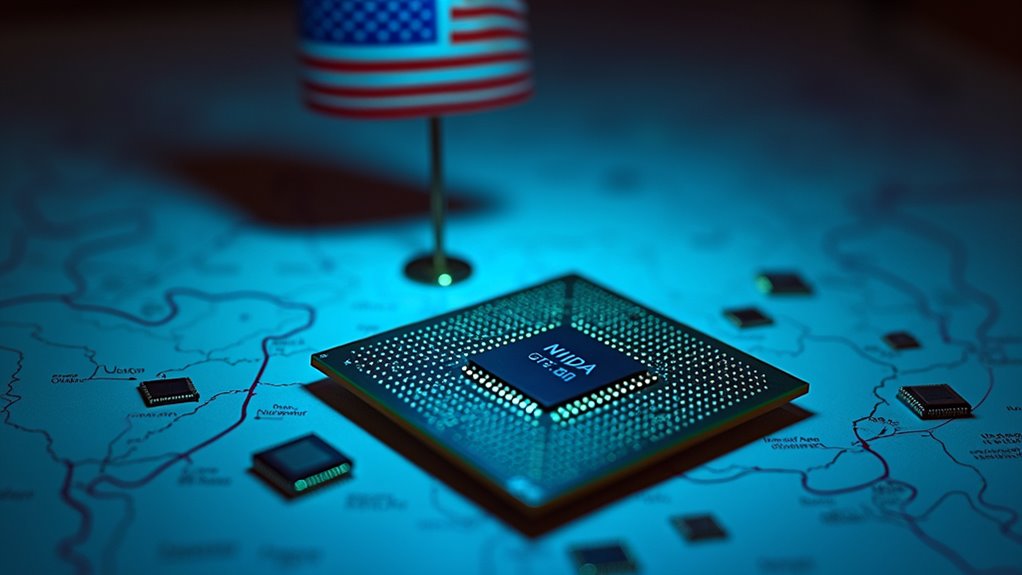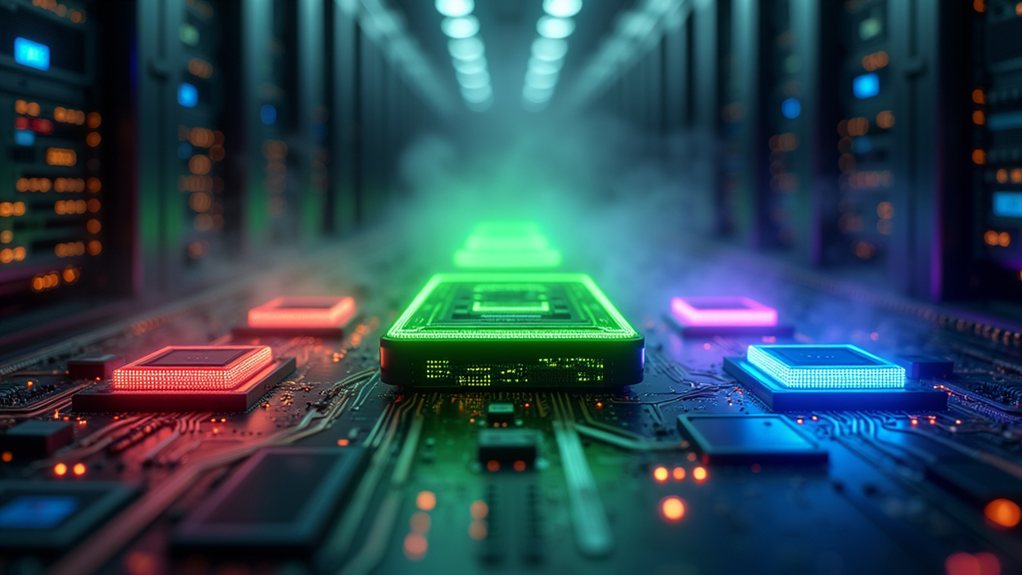Washington just released a monster crackdown on AI chip exports, shifting Nvidia from Silicon Valley darling to tech’s favorite scapegoat practically overnight. New rules slap bans on mid-tier accelerators like Nvidia’s H20, AMD’s MI308X, and Intel’s Gaudi—basically, anything with more bandwidth than a fast Netflix night now needs an export license. Nvidia alone could watch $16 billion go poof. Investors? Nervous. Gamers? Buckle up. And if you think that’s wild, wait until you catch what’s next.
Even as Silicon Valley was still recovering from its latest crypto hangover, Washington decided to toss a new wrench into the global tech machine: a sweeping AI chip crackdown aimed squarely at China—and, let’s be honest, anyone else who dares to build a supercomputer without asking permission first.
Let’s cut to the chase. The U.S. government’s latest export controls don’t just target “futuristic, sci-fi-level” chips. Nope—now even mid-tier accelerators like Nvidia’s H20, AMD’s MI308X, and Intel’s Gaudi need a permission slip (a.k.a. export license) to leave the country. Did your shiny accelerator cross thresholds like 1,400 GB/s DRAM bandwidth or 1,100 GB/s I/O? Sorry, back in the penalty box you go.
Even mid-tier AI chips like Nvidia’s H20 now need a permission slip to leave the country—welcome to the new export crackdown.
And it’s not just about what’s on the shelf today—future chips that hit these performance marks are now automatically caught in the net. If you’re a Chinese cloud giant? Sorry, your buffet of American silicon just went à la carte, with Uncle Sam as the maître d’. The fragmented global regulatory landscape creates additional hurdles for companies attempting to navigate multiple jurisdictions while maintaining compliance.
What’s the damage?
- Nvidia’s China-special H20? Basically dead in the water without paperwork.
- AMD and Intel? Say goodbye to the world’s second-biggest AI chip market.
- Tariffs from the Trump era are still lurking, just in case things weren’t spicy enough.
- The financial impact on U.S. chipmakers is massive, with Nvidia projected to lose up to $16 billion in revenue and AMD facing over $1.5 billion in potential losses.
Meanwhile, cloud providers are suddenly the cool kids at the party—AI access will soon hinge on “validated end-user” status, so if your name isn’t on the list, good luck training that next-gen chatbot.
Even gaming and consumer GPUs are getting caught in the crossfire, which means your next graphics card upgrade could be a little more expensive (or just missing entirely). The sudden stock market reaction to the ban saw Nvidia’s valuation drop by over $148 billion in mere hours, shaking investor confidence across the entire semiconductor sector.
Why all the drama? Officially, it’s about stopping China’s military-civil fusion and keeping U.S. AI supremacy on a short leash—6 to 18 months, if you believe the hype.
But as rules get complicated and carve-outs multiply for allies, the only guarantee is more headaches for chipmakers, more paperwork for regulators, and a whole lot more scrutiny—especially for Nvidia, now the poster child for Washington’s new tech paranoia.






